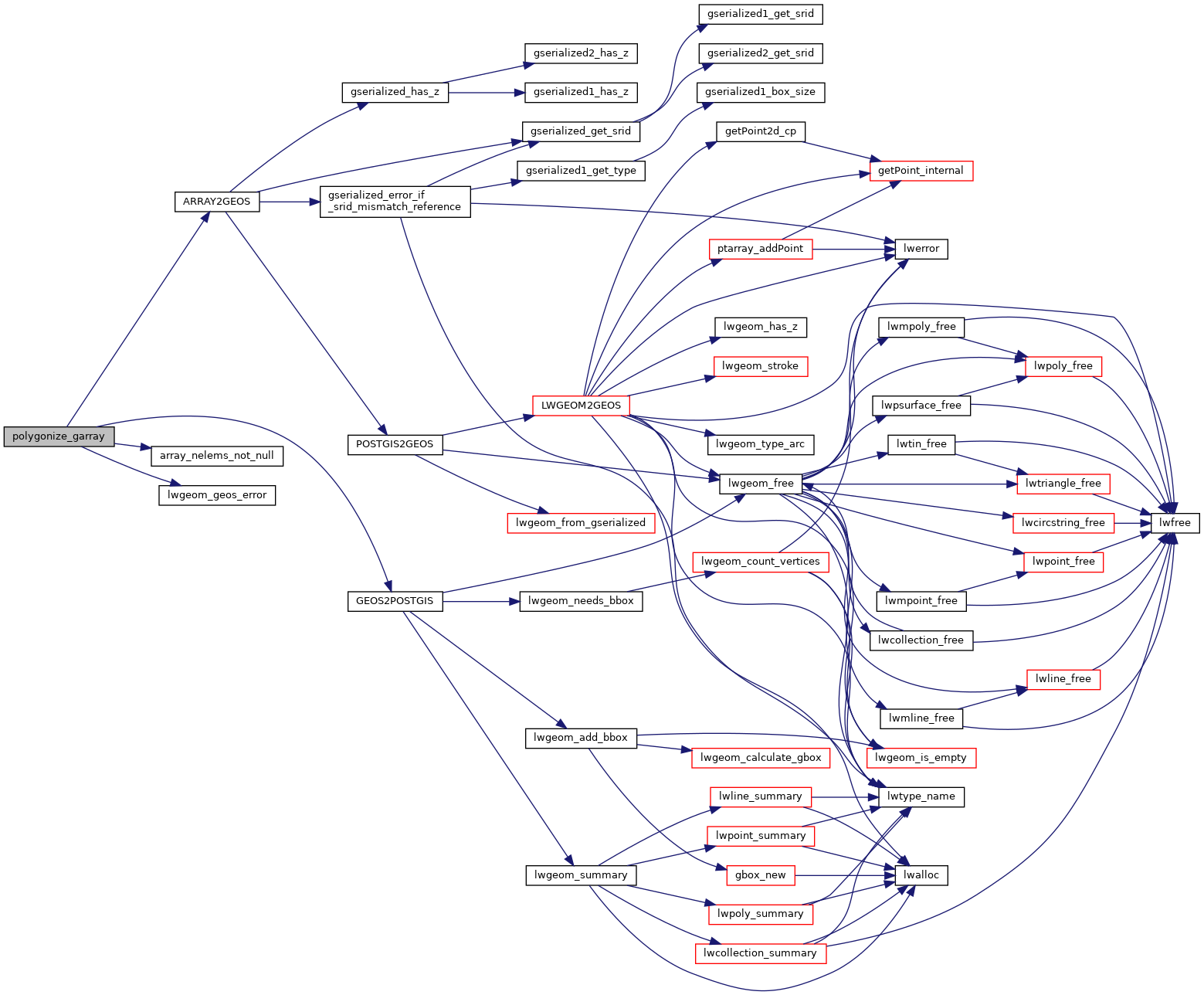◆ polygonize_garray()
| Datum polygonize_garray | ( | PG_FUNCTION_ARGS | ) |
Definition at line 1976 of file postgis/lwgeom_geos.c.
static uint32_t array_nelems_not_null(ArrayType *array)
Definition: postgis/lwgeom_geos.c:1838
GSERIALIZED * GEOS2POSTGIS(GEOSGeom geom, char want3d)
Definition: postgis/lwgeom_geos.c:1797
GEOSGeometry ** ARRAY2GEOS(ArrayType *array, uint32_t nelems, int *is3d, int *srid)
Definition: postgis/lwgeom_geos.c:1899
Definition: liblwgeom.h:443
References ARRAY2GEOS(), array_nelems_not_null(), GEOS2POSTGIS(), lwgeom_geos_error(), result, and SRID_UNKNOWN.
Referenced by pgis_geometry_polygonize_finalfn().
Here is the call graph for this function:

Here is the caller graph for this function:
